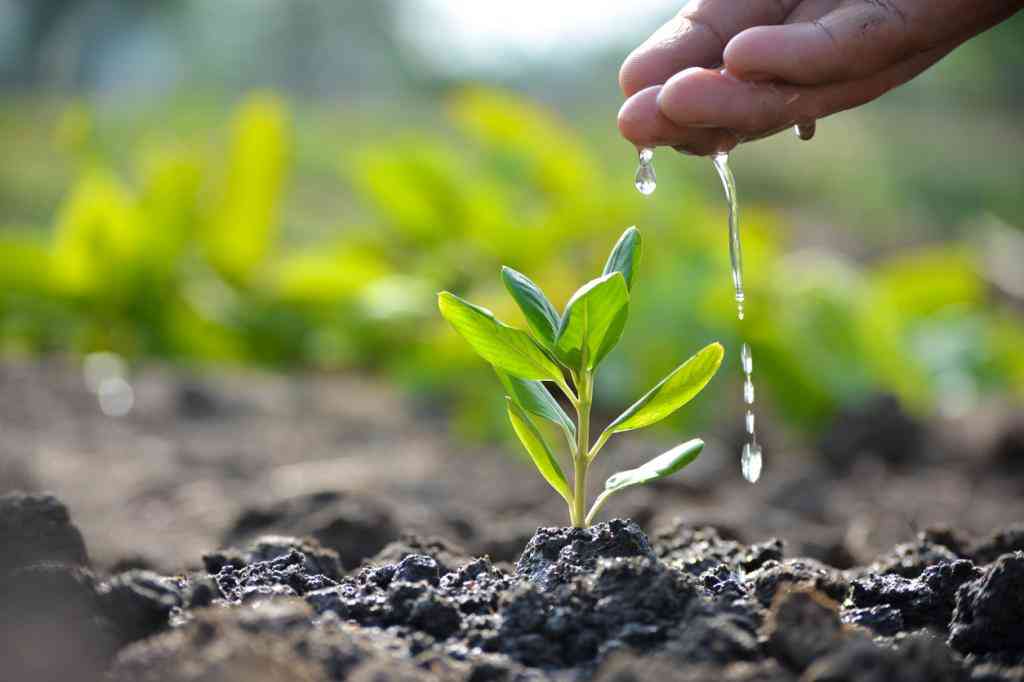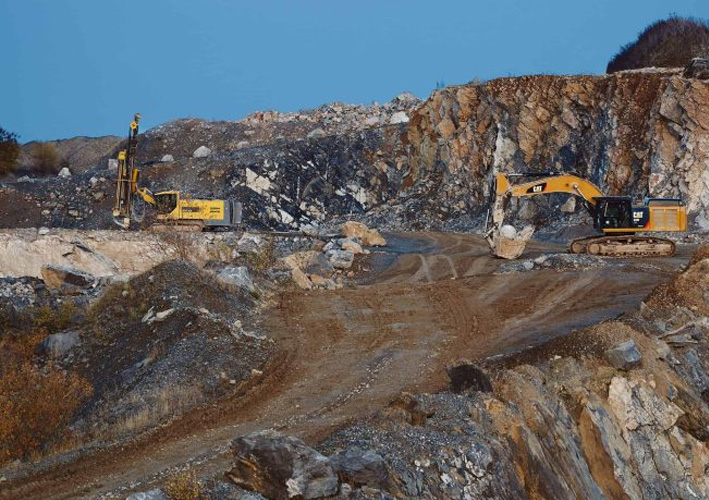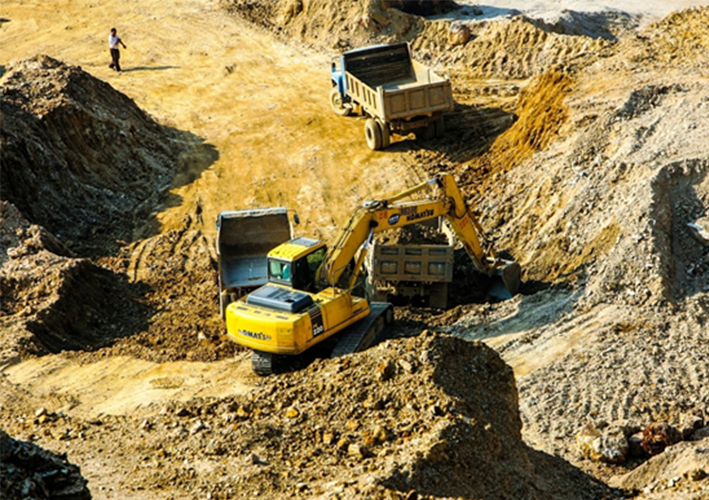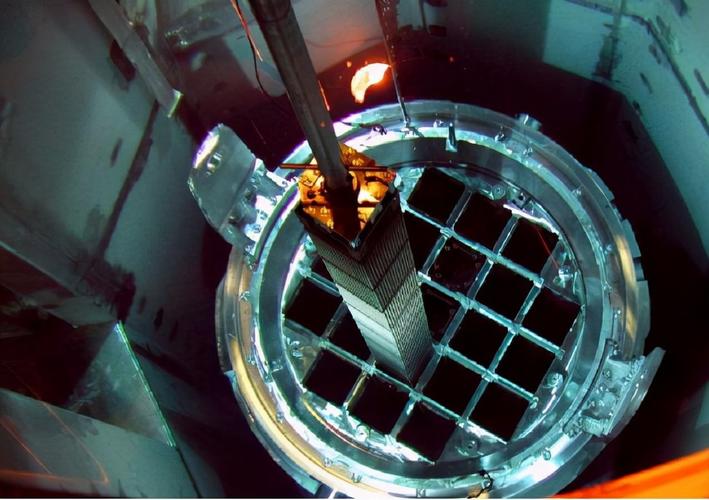According to the latest report from the U.S. Geological Survey (USGS) published in 2024, Vietnam ranks as the second-largest holder of rare earth elements (REE) in the world as of 2023.
Of the total 110 million tons of rare earth reserves worldwide as of 2023, Vietnam holds 22 million tons, accounting for 20% of the global rare earth reserves.
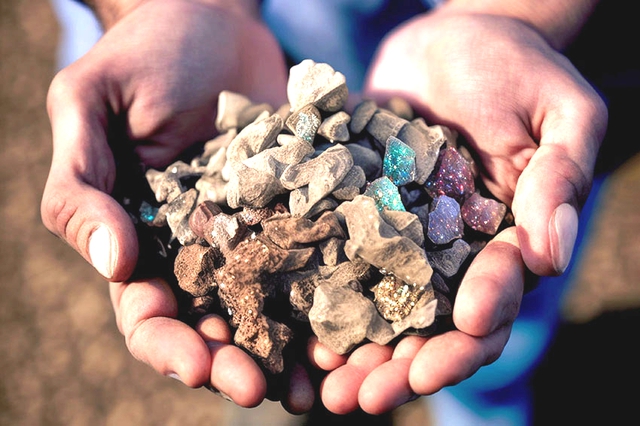
The most recent data from the United States Geological Survey reveals that the five countries with the largest rare earth reserves globally as of 2023 as follow:
China – 44 million tons
Vietnam – 22 million tons
Brazil – 21 million tons
Russia – 10 million tons
India – 6.9 million tons
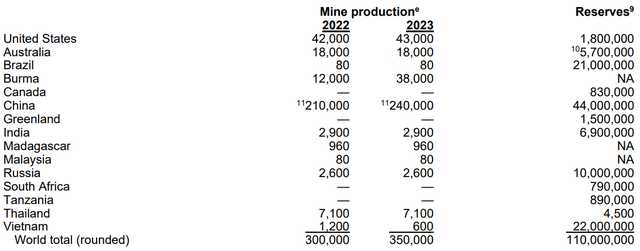
The data table published on rare earth reserves and production capabilities of 15 countries worldwide for 2023.
Source: United States Geological Survey (USGS) published in 2024.
Rare earth elements (REEs) are relatively abundant in the Earth’s crust, but economically viable concentrations are less common than most other minerals.
The Ministry of Natural Resources and Environment reports that Vietnam’s rare earth reserves are primarily concentrated in the Northwest region, including the provinces of Lao Cai, Yen Bai, Lai Chau, and Cao Bang. Other rare earth deposits are found in Nghe An, Ha Tinh, Thua Thien-Hue, Ninh Thuan, Binh Thuan, etc.
According to the American Geological Institute (AGI), rare earth elements include 17 metals: the 15 lanthanides from the periodic table plus scandium and yttrium.
Since their discovery in the 18th century (1787), rare earth elements have become essential components of numerous high-tech devices.
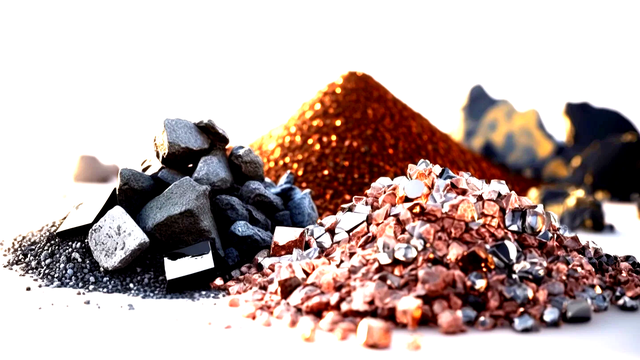
The USGS explains that rare earths are critical to over 200 products in various applications, particularly high-tech consumer goods such as mobile phones, computer hard drives, electric and hybrid vehicles, flat-screen displays and TVs. In national defense applications, rare earths are vital for electronic displays, navigation systems, lasers, radar, and sonar systems.
Although the quantity of rare earths used in a product may be tiny in terms of weight, value, or volume, they are crucial for the device’s operation.
For example, magnets that made from rare earth, despite their small weight, are indispensable for the functioning of desktop, laptop motors and loudspeakers.
Vietnam’s Ambitious Goals for 2030
Despite possessing the world’s second-largest rare earth reserves, Vietnam faces significant challenges in rare earth production capacity.
According to the 2024 USGS data, Vietnam has a reserve of 22 million tons but only produced 600 tons in 2023, up from 1,200 tons in 2022.
In contrast, China leads the world in rare earth processing capacity, increasing from 210,000 tons in 2022 to 240,000 tons in 2023. The United States, is the second-largest processor despite ranking seventh globally in rare earth reserves, with an increase from 42,000 tons in 2022 to 43,000 tons in 2023. This highlights China’s and the US’s advanced rare earth processing technologies.
In early June 2024, Minister of Natural Resources and Environment Dang Quoc Khanh stated that Prime Minister Pham Minh Chinh has directed the focus towards deep processing and refining of rare earths in Vietnam to meet domestic demand and explore export opportunities.
However, the current challenge is that Vietnam lacks sufficient deep processing technology, as noted by Minister Dang Quoc Khanh.
In 2014, Vietnam began extracting rare earths. Over the past decade, the country’s rare earth mining and production have not lived up to its potential. Currently, rare earth exports are limited to raw ore, which commands a low price.
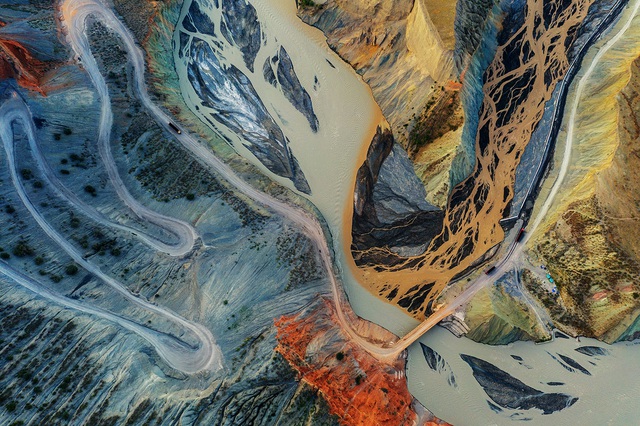
Professor Dr. Hoang Anh Son, Director of the Institute of Materials Science, Vietnam Academy of Science and Technology, mentioned that Vietnam does not yet have a processing plant capable of refining rare earth ores to export-standard products. The main issue is that companies with mining licenses have not mastered the technology to produce high-quality rare earths, such as those with over 95% purity, nor have they developed technology for separating and purifying individual products.
Regarding the technology for separating rare earth oxides and achieving high purity, while research has been conducted for some time, most advancements remain in the experimental stage, with no technology yet applied in practical settings.
Professor Dr. Hoang Anh Son has suggested that Vietnam should establish mechanisms and policies to attract investment from companies in rare earth mining and advanced processing, including technology transfer agreements, particularly with firms from countries with developed rare earth industries such as Japan, South Korea, and the United States, etc.
According to Decision No. 866/QD-TTg issued by the Prime Minister, which approves the exploration, mining, processing, and use of minerals for the period 2021-2030, with a vision to 2050, Vietnam aims to achieve an annual mining target of over 2 million tons of rare earth ore. By 2030, Vietnam targets to mine 2.1 million tons of rare earth ore for export.
To achieve these long-term goals, Vietnam needs to enhance exploration and extraction efforts while acquiring advanced rare earth processing technologies. This will not only meet domestic demand and target export markets but also align with its potential as the holder of the world’s second-largest rare earth reserves.
Sources: United States Geological Survey, American Geological Institute, Education and Times.


